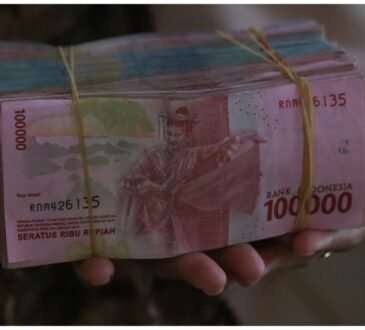- The Indian Rupee drifts lower in Tuesday’s Asian session.
- The weakness of Asian peers, higher crude oil prices and softer Indian CPI data weigh on the INR.
- Investors will monitor the US July PPI, which is due on Tuesday.
The Indian Rupee (INR) weakens on Tuesday despite the US Dollar (USD) trading in a consolidative theme. The combination of a decline in its Asian peers, the rise of crude oil prices, the softer Indian inflation data and a cautious mood in the market ahead of key US economic data contribute to the INR’s downside. However, the likely intervention by the Reserve Bank of India (RBI) to sell USD to prevent local currency from a more significant depreciation could limit the pair’s upside.
Traders will focus on the US Producer Price Index (PPI) for July for fresh impetus. On Wednesday, the US Consumer Price Index (CPI) will offer some hints about the Federal Reserve’s (Fed) decisions regarding rate cuts. On the Indian docket, the Wholesale Price Index (WPI) inflation will be closely monitored, which is estimated to ease from 3.36% YoY in June to 2.39% in July.
Daily Digest Market Movers: Indian Rupee remains weak amid multiple headwinds
- India’s CPI inflation eased to 3.54% YoY in July from 5.08% in June. This figure registered the lowest since August 2019, according to official data released on Monday.
- Indian Industrial Production rose by 4.2% in June, compared to 6.2% in the previous reading, worse than the expectation of 5.5%.
- The swaps market is pricing in steady rates by the RBI over the next three months. However, this is followed by 25 basis points (bps) of easing over the subsequent three months, followed by another 25 bps over the subsequent six months.
- The CME FedWatch Tool showed the possibility of a 50 basis points (bps) interest rate cut by the Fed at the September meeting at 47.5%, down from 52.5% last Friday.
- The US Producer Price Index (PPI) is estimated to ease to 0.1% month-over-month in July from 0.2% in the previous reading.
Technical Analysis: USD/INR’s broader outlook is still positive
Indian Rupee trades weaker on the day. The USD/INR pair maintains a constructive outlook on the daily timeframe, with the price holding above the key 100-day Exponential Moving Average (EMA) and the two-month-old uptrend line. The 14-day Relative Strength Index (RSI) is well-supported above the midline near 65.50, suggesting the path of least resistance level is to the upside.
The 84.00 psychological barrier appears to be a tough nut to crack for USD/INR buyers. A decisive bullish breakout above this level could pave the way to the all-time high of 84.24. Extended gains could see a rally to 84.50.
On the flip side, the initial support level is seen near the uptrend line at 83.84. A breach of this level could expose the 100-day EMA at 83.52.
Indian Rupee FAQs
The Indian Rupee (INR) is one of the most sensitive currencies to external factors. The price of Crude Oil (the country is highly dependent on imported Oil), the value of the US Dollar – most trade is conducted in USD – and the level of foreign investment, are all influential. Direct intervention by the Reserve Bank of India (RBI) in FX markets to keep the exchange rate stable, as well as the level of interest rates set by the RBI, are further major influencing factors on the Rupee.
The Reserve Bank of India (RBI) actively intervenes in forex markets to maintain a stable exchange rate, to help facilitate trade. In addition, the RBI tries to maintain the inflation rate at its 4% target by adjusting interest rates. Higher interest rates usually strengthen the Rupee. This is due to the role of the ‘carry trade’ in which investors borrow in countries with lower interest rates so as to place their money in countries’ offering relatively higher interest rates and profit from the difference.
Macroeconomic factors that influence the value of the Rupee include inflation, interest rates, the economic growth rate (GDP), the balance of trade, and inflows from foreign investment. A higher growth rate can lead to more overseas investment, pushing up demand for the Rupee. A less negative balance of trade will eventually lead to a stronger Rupee. Higher interest rates, especially real rates (interest rates less inflation) are also positive for the Rupee. A risk-on environment can lead to greater inflows of Foreign Direct and Indirect Investment (FDI and FII), which also benefit the Rupee.
Higher inflation, particularly, if it is comparatively higher than India’s peers, is generally negative for the currency as it reflects devaluation through oversupply. Inflation also increases the cost of exports, leading to more Rupees being sold to purchase foreign imports, which is Rupee-negative. At the same time, higher inflation usually leads to the Reserve Bank of India (RBI) raising interest rates and this can be positive for the Rupee, due to increased demand from international investors. The opposite effect is true of lower inflation.




